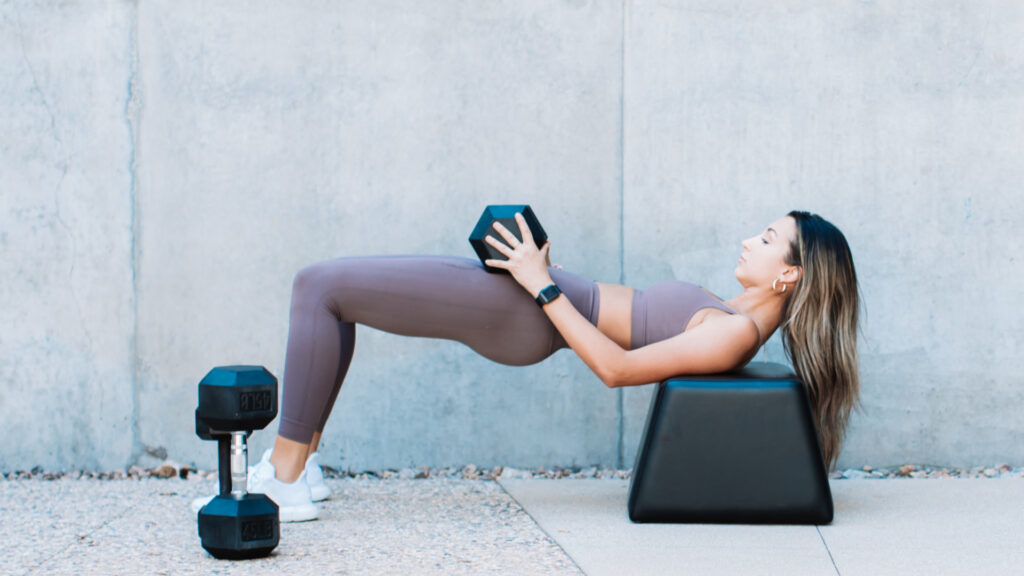I have a confession: when I train my lower body, especially my glutes, my quads always steal the show. I’ve moaned to my coach about it more times than I can count. “My legs bulk up too quickly!” I say. He doesn’t think it’s a problem, but I do.
I’m quad-dominant, and doing squats to target my glutes just doesn’t do the trick. So it was time to rethink the plan.
Some people say I shouldn’t even train my lower body with weights, that I do enough already with my running. But strong glutes aren’t just about aesthetics. They’re essential for functionality, too.
The gluteus maximus is the largest muscle in the body. Along with the gluteus medius and minimus, it powers everything from walking and running to climbing stairs and standing tall. Your glutes are responsible for hip extension, a movement that underpins athletic power, spinal support, and good posture. They also help distribute load evenly throughout the body, reducing stress on the knees, hips, and lower back.
In short, glutes are the foundation of functional movement, injury prevention, and a powerful physique. However, isolating them without letting your quads take over the movement requires precision. That’s where smart programming (and experts like PT Andrew Taylor, aka The Glute Master) comes in.
This four-move, glute-focused routine hones in on optimal activation through angles, tempo, and tension, with no traditional squats required. Each move targets the glutesfrom a different direction to build strength, symmetry, and shape while reducing knee stress and limiting quad takeover. Here’s how.
The workout
1. Machine Hip Thrusts
How many? 4 sets of 12 reps
Why do it? Think of this as your glute primer, ideal for getting those muscles switched on at the start of your workout. Training the glutes in their shortened range, the machine lets you load up safely and maintain form.
How to do it: Sit with your shoulder blades against the pad and feet flat, slightly wider than hip-width, making sure your knees are at 90 degrees when your hips are fully extended. Brace your core and drive through your heels to lift your hips. Squeeze hard at the top, but avoid overextending your lower back. Lower slowly, keeping glutes under tension throughout.
2. Dumbbell B-Stance Sumo Squats
How many? 4 sets of 12 reps per side
Why do it? This staggered wide-stance squat encourages unilateral glute activation and minimises quad dominance. The dumbbell keeps your core switched on, and the B-stance hits one glute at a time.
How to do it: Hold a dumbbell goblet-style at waist height. Step into a wide sumo stance with one foot slightly staggered behind and heel raised. Hinge slightly at the hips, then bend your knees to squat, pushing your butt back. Keep your torso tilted forward and knees pushing out. Drive up through your front heel and repeat.
3. Smith Machine Banded Froggies
How many? 3 sets of 15–20 reps
Why do it? A serious burner for your upper glutes – the “top shelf”.
How to do it: Anchor the resistance bands to the machine. Lie on the weight bench with hips under the bar and feet pressed together, soles touching. Brace your body and drive your feet straight up. Focus on short, controlled repetitions and maintain tension on the glutes throughout.
4. Reverse Hack Squat (Glute-Biased)
How many? 3 sets of 10–12 reps
Why do it? A squat variation that puts the glutes front and centre, not your thighs.
How to do it: Face the hack squat machine, with your shoulders under the pads and back against the rest. Place your feet higher and wider on the platform for more glute emphasis. Lower slowly, pushing hips back and keeping knees soft. Drive up through your heels without locking out at the top. Think: sit back and squeeze, not press and push.
Verdict
If you struggle to feel your glutes working, or finish leg day with your quads on fire and glutes barely touched, this workout flips the switch. Every move stretches and contracts your glutes through a full range of motion, ensuring they’re doing the heavy lifting.
By ditching traditional squats, you spare your knees, reduce quad dominance, and send all the tension exactly where it’s supposed to go – to the “GLOOOOTS,” as Andrew puts it.
So far, I’m loving the results. My legs, for once, aren’t feeling the work; they get more than enough from running anyway, and I’m finally feeling it deep, ridiculously deep, in all the right places.


